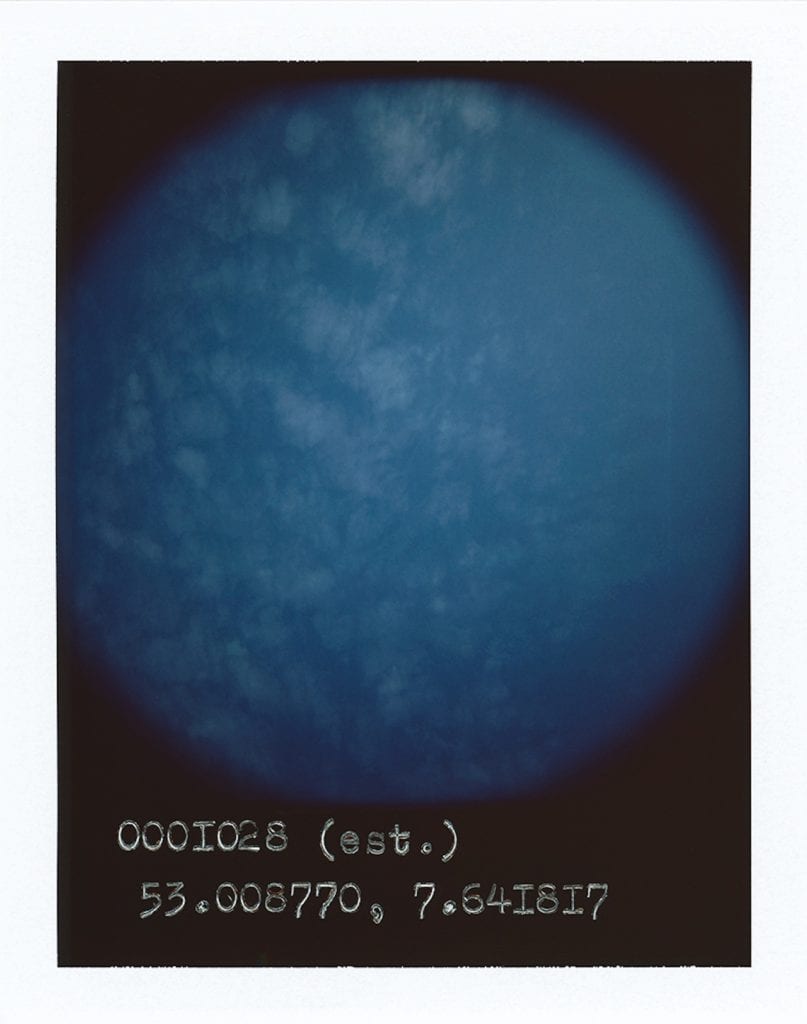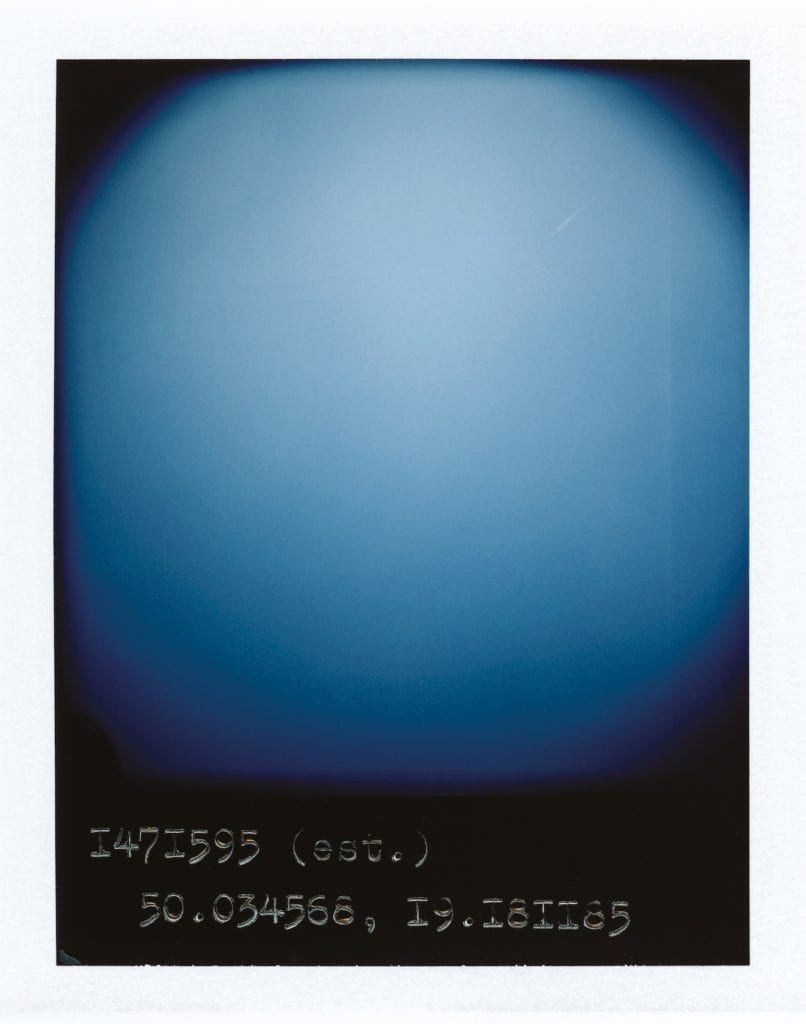This article is adapted from an article originally published in issue #7891 of British Journal of Photography. Visit the BJP Shop to purchase the magazine here.
With its haunting atmosphere and epic scale, the chilling impact of Anton Kusters’ The Blue Skies Project strikes us even before we understand the intricacies of its five-year history. Consisting of 1078 Polaroid photos of the blue skies above Nazi concentration camps, each stamped with the estimated victims and its GPS coordinates, the work highlights the huge extent of the genocide.
The project has visited various installations over the year, each time evolving into a poignant site-based experience. Curated by Monica Allende and accompanied by a 13-year-long audio piece by Ruben Samama, this year, the exhibition that took place at Fitzrovia Chapel during Photo London 2019 has been shortlisted for the prestigious Deutsche Börse Photography Foundation Prize, and will be exhibited at The Photographer’s Gallery, London, from 21 February.
Kusters’ journey began with an interest in his grandfather’s history during the Second World War. The Belgian artist visited Auschwitz for the first time in 2012, with his camera in hand. But instead of photographing the site, he felt compelled to point his lens upwards, taking a picture of the clear blue sky and wispy white clouds. When he then entered the site museum, he made a discovery.
“I saw this huge map of Europe with more than 1000 black dots demarcating all the other known concentration camps, and I thought, ‘Why don’t I know about all these sites?’ We always focus on this one place – Germany – because that is how we have constructed our collective memory. I found out that concentration camps were set up as early as seven weeks after Hitler came to power, which was around seven years before the war even began.”

Installation detail of the project at United States Holocaust Memorial Museum in Washington DC. © Anton Kusters.
Kusters quickly decided that he wanted to continue documenting the lesser-known sites – or rather, the skies above them – to reframe our collective understanding of Holocaust trauma. However, many locations are only possible to find through archival research.
“I would find a description of the camp, which might be a bit vague, and then I would track it on Google Earth. The difficult part was nailing the perfect weather conditions. Sunny days with blue skies are hard to come by in Europe, and they were essential for the message of the work, which highlights the endlessness of a blue sky, of not having a concrete context for what you’re looking at. Looking up and away from the landscape – from the sites, from the mass graves – is a commentary on how we all collectively looked away at one point in history, and often still look away today.”

The resulting body of work has been installed in various venues since its completion — a version of the work is currently on view at the United States Holocaust Memorial Museum until 2021. The Deutsche Börse-nominated exhibition at Fitzrovia Chapel includes a soundscape by Ruben Samama, which recreates in sound and length, the period between 1933 and 1945 when the camps were operational. Curated by Monica Allende, the instant-film photographs were selected to respond to different spaces and hangs, usually in a grid pattern to emphasise their volume. By documenting each site with a Polaroid – a notoriously difficult process to conserve – Kusters reflects on the process of how collective commemoration affects the future memory of traumatic events.
“Each time this work is shown, an act of conservation has to be made by the institution’s curator. Are they going to show it in a place so that it fades, so that it carries the scars of where it has been shown? Or do we put it in encased concrete so that it is absolutely protected? It’s a commentary on how we deal with memory. If we lock it away, it might be protected but never seen. And if we show it, it might fade and evolve into something else entirely.”
The Blue Skies Project by Anton Kusters will be shown as part of the the Deutsche Börse Photography Foundation Prize exhibition at The Photographers Gallery from 21 February until 07 June 2020.
—









